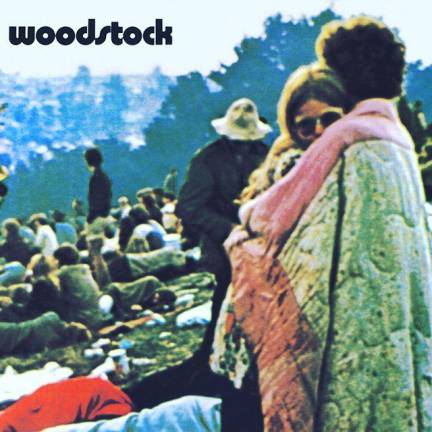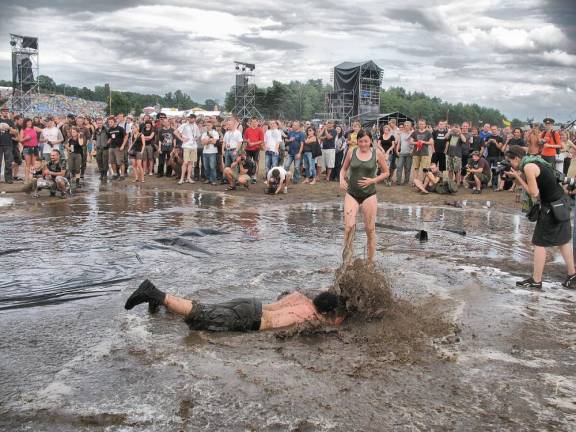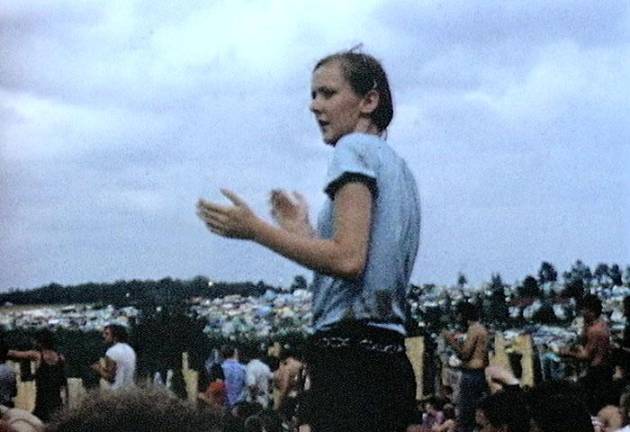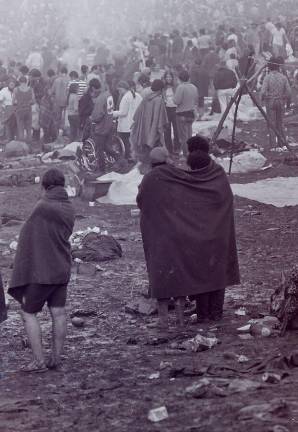Mid-August Festival at Woodstock in ‘69 Forever Changed the Way World Looked at Younger Generation
The Woodstock Music & Arts Festival, which lasted for three days in mid-August ‘69 was billed as a three day festival of “peace, love and music.” In many ways, it would change the way the country looked at an entire generation of young people and how a young generation saw themselves. Its reverberations in many ways are still being felt today.




The year 1969 will forever be remembered for one of three major events: a) the three-day peace-and-love Woodstock extravaganza in upstate New York that started on Aug. 15; b) Americans landing on the moon in July; and c) the Miracle Mets winning their first World Series in October, seven years after they were the losing-est team in the history of baseball
As to which has had the most enduring impact, fifty four years later, I’ll go with “a” Woodstock. And not because I nearly flunked astronomy in my freshman year of college or have always been a Yankees fan.
The country was riveted by Woodstock in 1969 followed a year later by an Academy Award winning documentary that became one of the top grossing movies of the year accompanied by a triple gatefold soundtrack album that sold over two million LPs. But tingles from long ago can seem overrated and frivolous in current times.
Some music critics in more recent years criticized and even attacked the quality of the musicians’ performances especially when compared to the more aesthetically pleasing-sounding music that came years later. The technological innovations in a recording and mixing studio sure topped the soundtrack from dozens of rain drenched musicians in a cow pasture in Bethel, NY.
It’s a fair point, even I’ll admit today, that the on-stage banter of such hippie-favored artists as Arlo Guthrie and Country Joe McDonald now sounds utterly pretentious. But back then Country’s Joe’s now infamous crowd pleasing chant “Give me an F, give me a U, ...” was revolutionary and captured the rebellious spirit of a generation that was tired of being lied to by the country’s leaders about a war the young generation no longer supported.
From 1964 until the end of American involvement in 1973, 34.2 million young men registered for the draft, 1.8 million were actually drafted and 58,220 never came home.
But Woodstock was more than an anti-war movement and it stands for a lot more than tie-dye merch, free love, rolling around in the mud and a hippie ethos.
Woodstock reminds us about what might have been–when a huge youth movement seemed to move the larger world–at least for a little while.
Woodstock was about a feeling, a sensation–not a ringing cash register. The festival showed that hundreds of thousands of young people could gather and enjoy themselves in a model new society.
If you ran out of food, someone in the throng would feed you. If you needed refuge during the heavy rain during the festival, your neighbor let you hang under a tent. People hitchhiked everywhere without worrying about getting killed. Not just to Woodstock, but across the entire country for the next decade.
The spirit of Woodstock was dominated by sharing.
Yes, there was lots of drugs and free love, too, side by side, at Woodstock–and while scantily clad men and women enjoying life made for some memorable photos that shocked an older generation, to the young people there, everything was cool.
The drugs may have been liberating at the time, but excessive use and the idea that “anything goes and everything is alright” undermined youth culture as well. Jimi Hendrix–who was the last act to go on at the three day festival–and Janis Joplin would both be dead within 14 months of the gathering.
Woodstock did not take place during some magical time to be sure. The Woodstock festival occurred practically a year to the day of the Chicago riots during the 1968 Democratic Convention. Richard Nixon had been sworn for his first term in the White House only seven months earlier promising a “secret plan to end the war,” that included more bombs and more deaths on all sides.
The promise of the mid-1960s may have already been getting derailed. The Beatles were breaking up. Bob Dylan was recording harmless country-tinged songs, rather than songs about the social upheaval that his earlier material helped spark. Only a few months later, came the disaster at Altamont, the Rolling Stones’ free concert that became more infamous for the murder that was captured in the 1970 documentary Gimme Shelter than for the good vibes and music that Mick Jagger and the Stones tried to present on a deadly December night.
In the end, Woodstock might have been more like an island in a turbulent sea or an experiment that actually worked for a short and glorious time.
Woodstock was also the occasion when the advertising community watched in amazement and thought: We can make a fortune off these kids!
Companies that used to market to housewives suddenly reversed course and appealed directly to a mass of young people for the first time. Woodstock was suddenly both trendy and marketable.
Meanwhile, American kids continued to be drafted to fight and die in Vietnam.
Woodstock, all these years later, stills stands for something: the promise of a generation when young people pushing together seemed ready to try to accomplish great things. Sure, some of the promises may have gone unfulfilled. But not forgotten.
The iconic cover of the Woodstock soundtrack album showed a photo taken on the final day of a boyfriend wrapping his blanket around his girlfriend. The young woman, Bobbi Kelly, then only 17, said she never told her mother that they had gone to the last day of the concert, piling into a friend’s car right after Mass that Sunday. But she had to fess up a year later in 1970 when the triple gatefold LP hit with Bobbi and her boyfriend Nick Ercoline on the cover. He turned into her husband of 54 years until she passed away this past March and he posted the sad news on Facebook. “She lived her life well, and left this world in a much better place. If you knew her, you loved her. She lived by her saying, ‘Be kind’.”
Those fine words capture the spirit of Woodstock.